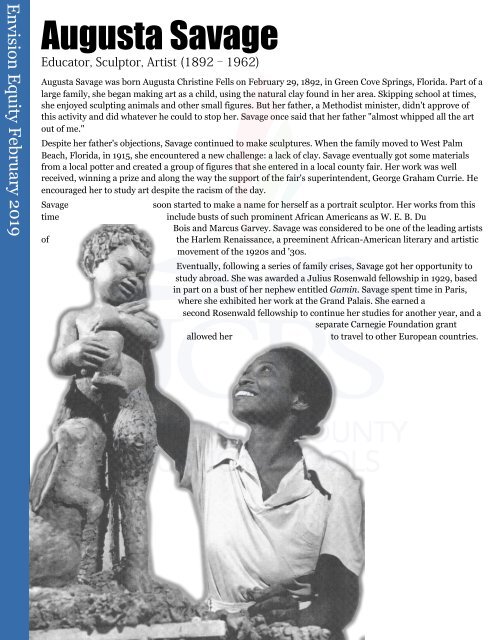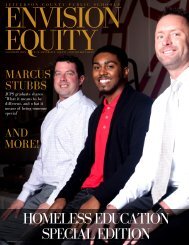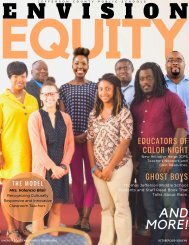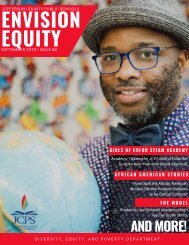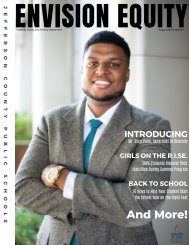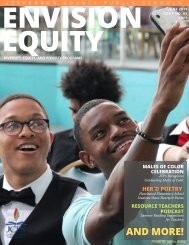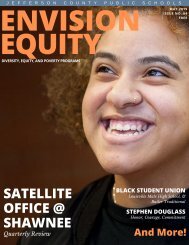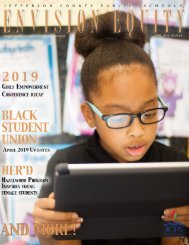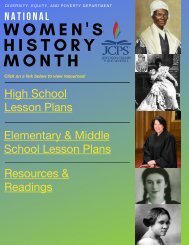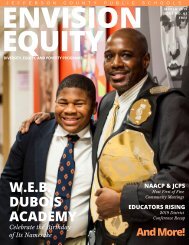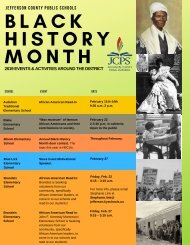Envision Equity February 2019 Special Black History Month Edition
Envision Equity February 2019 Special Black History Month Edition
Envision Equity February 2019 Special Black History Month Edition
Create successful ePaper yourself
Turn your PDF publications into a flip-book with our unique Google optimized e-Paper software.
<strong>Envision</strong> <strong>Equity</strong> <strong>February</strong> <strong>2019</strong><br />
Augusta Savage<br />
<br />
<br />
Augusta Savage was born Augusta Christine Fells on <strong>February</strong> 29, 1892, in Green Cove Springs, Florida. Part of a<br />
large family, she began making art as a child, using the natural clay found in her area. Skipping school at times,<br />
she enjoyed sculpting animals and other small figures. But her father, a Methodist minister, didn't approve of<br />
this activity and did whatever he could to stop her. Savage once said that her father "almost whipped all the art<br />
out of me."<br />
Despite her father's objections, Savage continued to make sculptures. When the family moved to West Palm<br />
Beach, Florida, in 1915, she encountered a new challenge: a lack of clay. Savage eventually got some materials<br />
from a local potter and created a group of figures that she entered in a local county fair. Her work was well<br />
received, winning a prize and along the way the support of the fair's superintendent, George Graham Currie. He<br />
encouraged her to study art despite the racism of the day.<br />
Savage<br />
time<br />
of<br />
soon started to make a name for herself as a portrait sculptor. Her works from this<br />
include busts of such prominent African Americans as W. E. B. Du<br />
Bois and Marcus Garvey. Savage was considered to be one of the leading artists<br />
the Harlem Renaissance, a preeminent African-American literary and artistic<br />
movement of the 1920s and '30s.<br />
Eventually, following a series of family crises, Savage got her opportunity to<br />
study abroad. She was awarded a Julius Rosenwald fellowship in 1929, based<br />
in part on a bust of her nephew entitled Gamin. Savage spent time in Paris,<br />
where she exhibited her work at the Grand Palais. She earned a<br />
second Rosenwald fellowship to continue her studies for another year, and a<br />
separate Carnegie Foundation grant<br />
allowed her<br />
to travel to other European countries.


